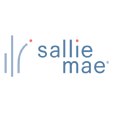Your 1-2-3 Approach to Paying for College
When you’re planning for college, the first question is often which school to choose. But equally as important is the question of how you’ll pay for it. That’s why RBFCU has partnered with Sallie Mae® to bring you their 1‑2‑3 approach to paying for college.
If you’re not sure how you’ll pay for college or what you can afford, taking it one step at a time can help.

1. Start with money you won’t have to pay back.
College savings
Begin with any college savings you or your family have been put aside for college.Scholarships
Scholarships are offered by colleges and universities, federal and state governments, religious groups, professional associations, employers, and other companies. Get the most free money possible.
(Article continues below video)
Scholarships aren’t just for straight-A students or athletes, but they can be awarded for a number of criteria:
- Organization memberships
- Community leadership
- Financial need
- Ethnic, religious, or national background
Apply for scholarships — the earlier, the better, since many have deadlines. And remember to apply for scholarships every year you plan to attend college — not just for freshman year.
Grants and work‑study
Grants and work‑study are generally federally funded, so be sure to submit the Free Application for Federal Student Aid (FAFSA®) to apply for them. The FAFSA® is also used to apply for most state loan, grant, and scholarship programs.
- Pell Grants, the largest federal grant program, are based on financial need; unlike a loan, a Pell Grant doesn’t need to be paid back.1
- Work‑study programs are offered by federal and state governments, as well as schools. They offer part‑time jobs that let students earn money to help pay education expenses.
2. Explore federal student loans.
There are several types of federal student loans, including Direct Subsidized Loans, which are based on financial need and Direct Unsubsidized Loans, which are available regardless of family income.
- You can apply for both by filling out and submitting the FAFSA®.
- They’re issued in the student’s name and the student is responsible for paying them back.
- They’re eligible for income‑driven repayment plans that link monthly payments to income.
- Federal loans may be eligible for loan forgiveness programs, such as the Public Service Loan Forgiveness Program for borrowers who are employed by a qualifying public service organization.
3. Consider a responsible private student loan.
If you still need more money for school, a private student loan can help. Private loans differ from federal student loans in several ways:
- They’re originated by banks and credit unions.
- They’re credit‑based: the lender reviews your credit score, history, and other information to determine if you qualify. A cosigner — parent, guardian, or other adult — may improve the chances of approval. Some lenders offer a cosigner release option.
- Your interest rate is based on several factors, including your creditworthiness.
- Private student loans may offer different features, terms and options, and benefits that can help reduce your interest rate and/or total loan cost.



